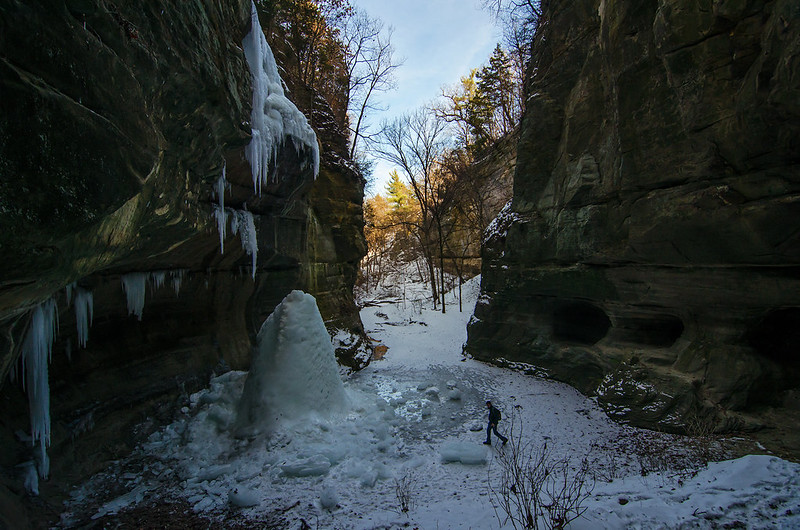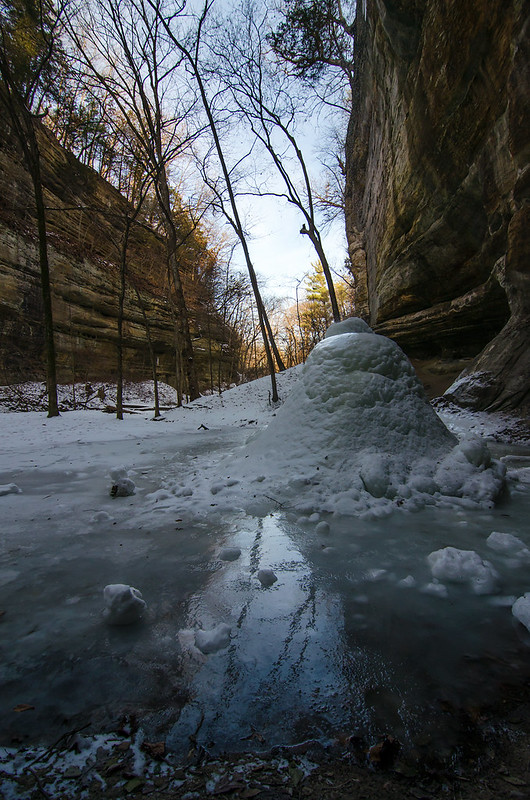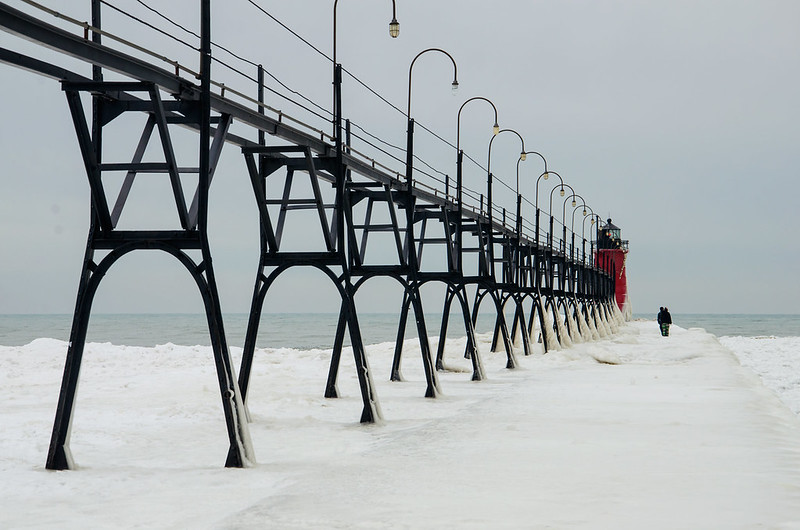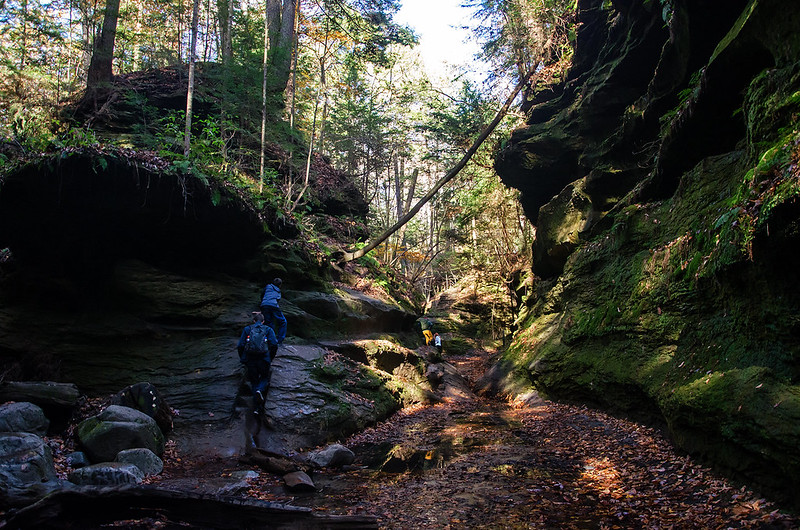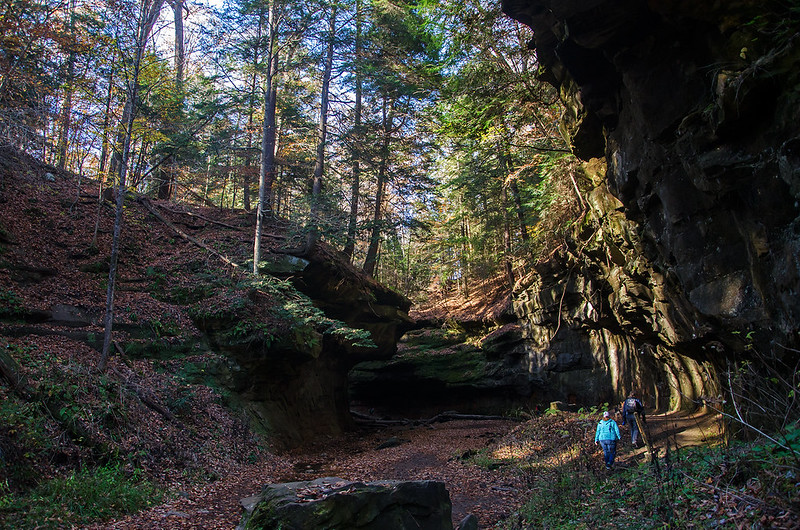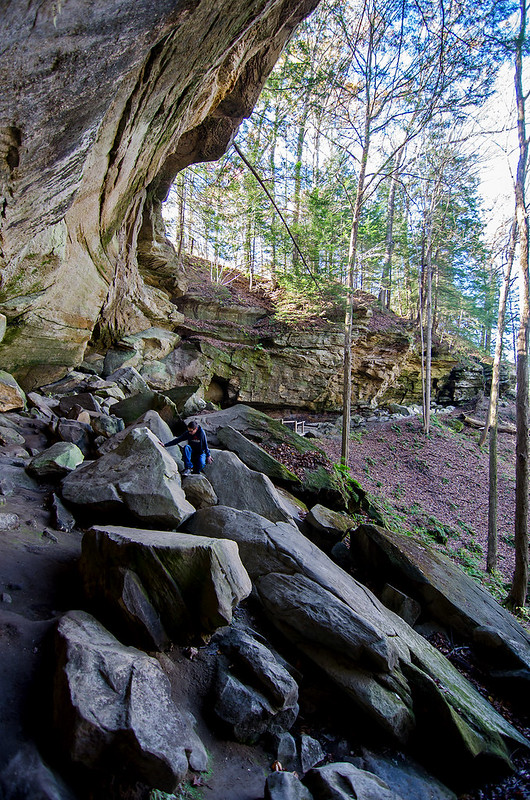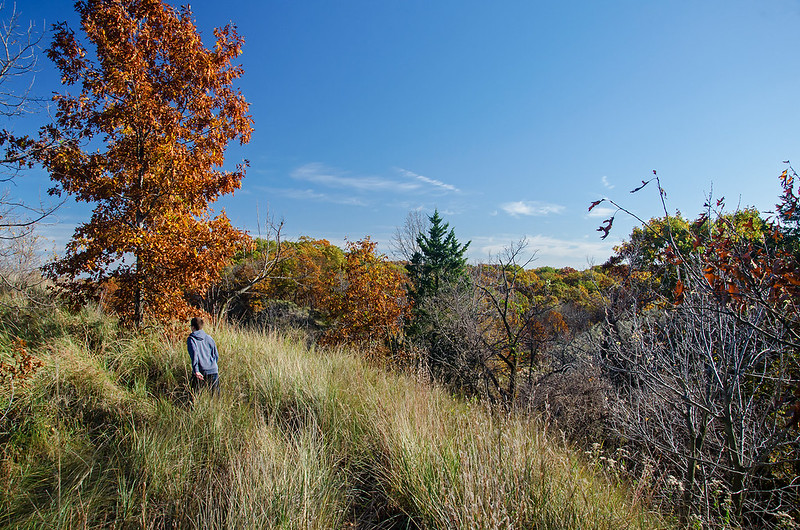
Our first visits to Buffalo Rock State Park were rather uneventful -not much worth photographing really. This time, we focused on an area where the rock cliffs were exposed, and found things much more interesting.
The sandstone of the area was once quarried for the silica, and this particular area was created after the quarrying stopped. The cliff walls were created by the quarrying process, yet they appear quite natural given the many canyons of the area. Certainly, the rock is natural, but it's my guess the canyon itself was made much larger by the quarrying process.

The area is relatively hidden from the main trail, but a few smaller trails lead to the edge. Care must be taken not to slip into the canyon, the loose sandstone crumbles at times. Keeping a safe distance from the edge was key, especially with the icy conditions created by the recent freezing rain storms.
Looking up from the bottom of the canyon, rock climbing would certainly be something enjoyable here, but again, the crumbling stone prevents anyone with good sense from even trying.

While much smaller than any of the canyons of nearby Starved Rock, this Buffalo Rock canyon is a bit more interesting than most of those. The colors of the canyon remind us of something in a western desert, and some areas of eroded stone look like the white sand beaches of Florida.

We also kept our distance from the rock walls most of the time. Numerous boulders were laying on the canyon floor, and they appeared relatively fresh. This area had quite an avalanche in resent years, leaving a pile of boulders to explore.





